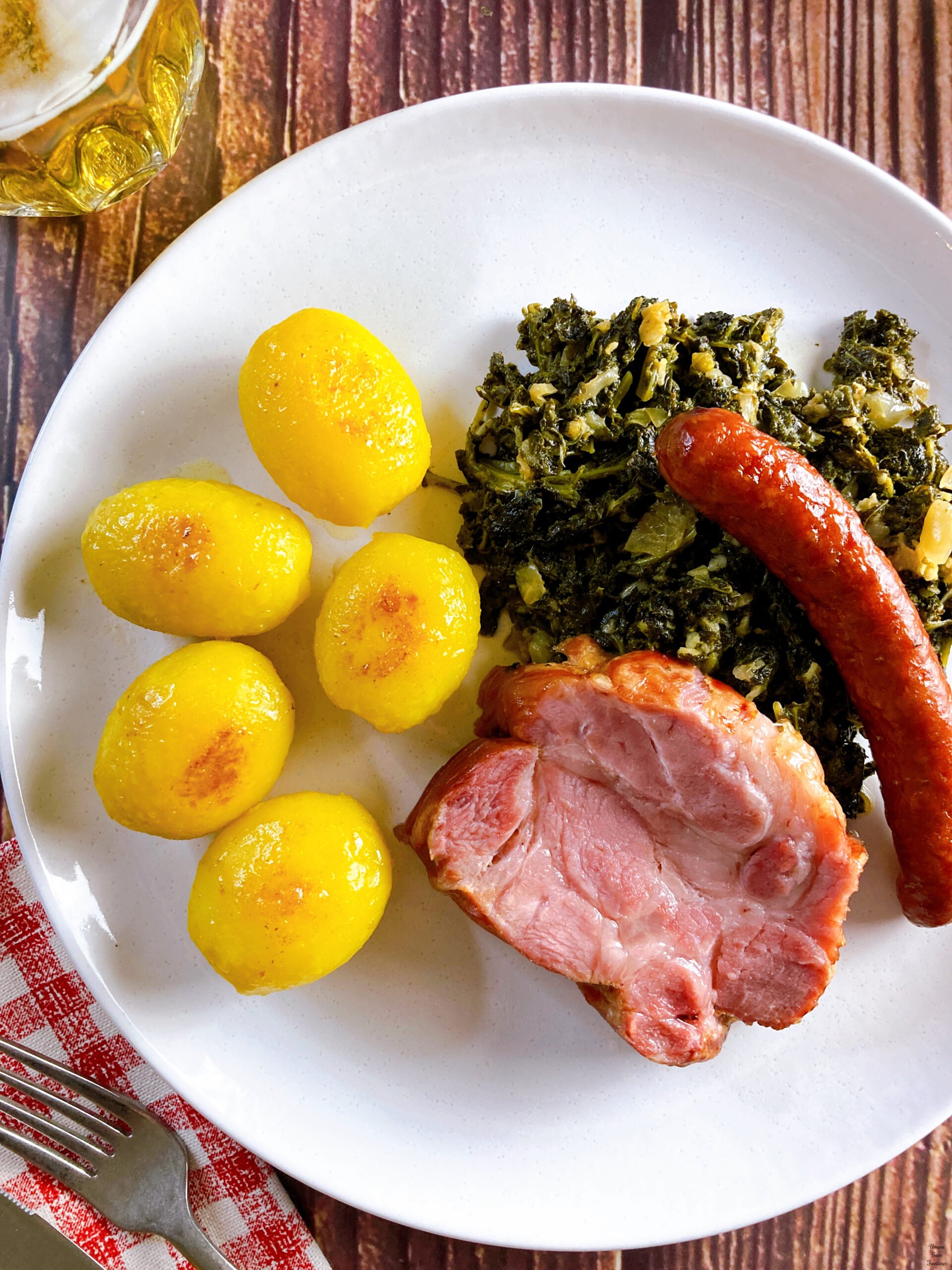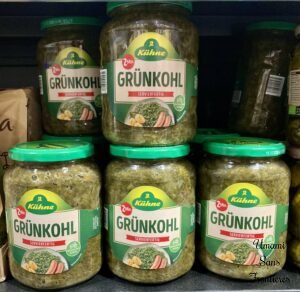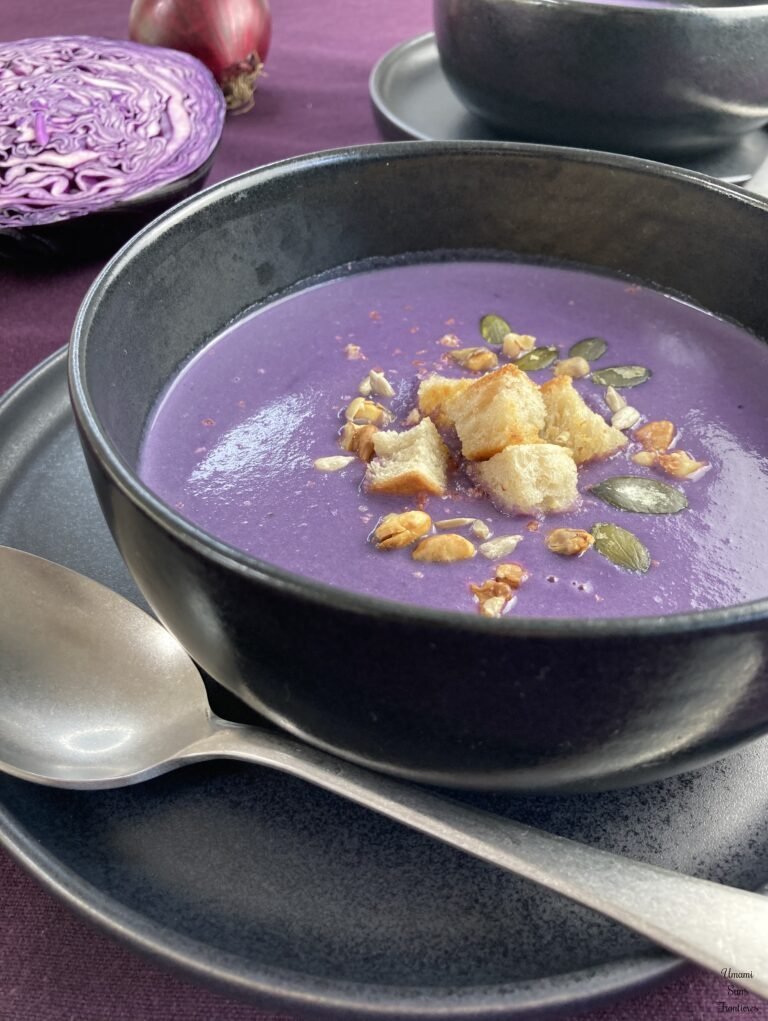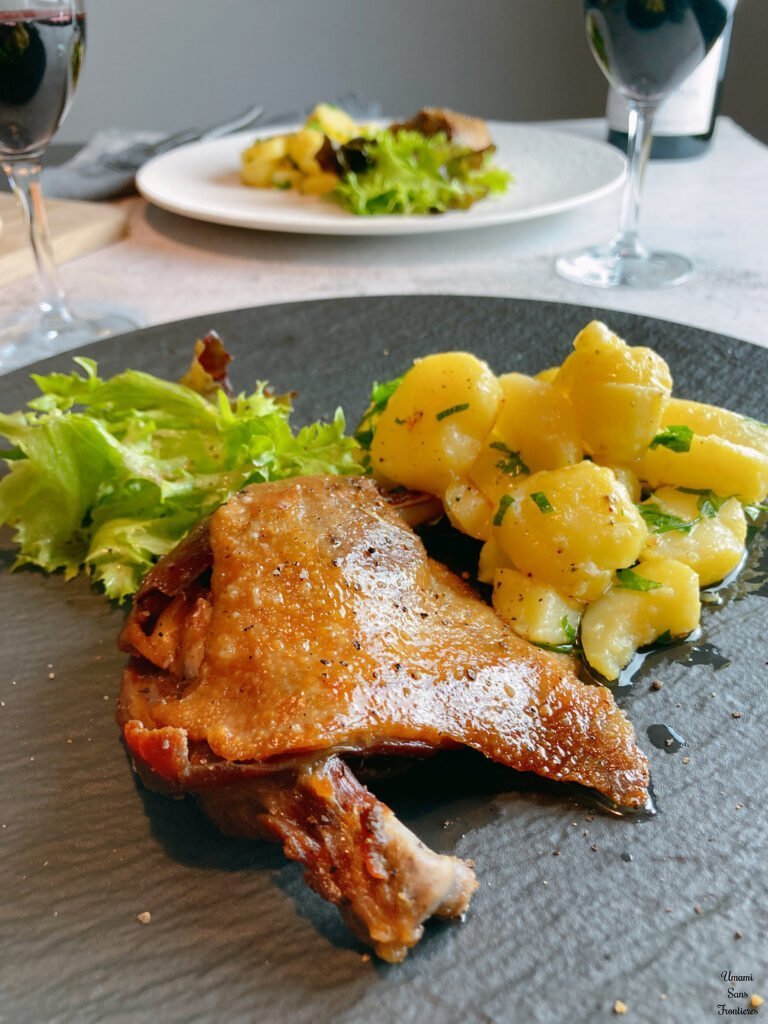As winter settles in, so does one of Germany’s favorite seasonal greens—Grünkohl. This hearty vegetable, closely related to curly kale, has been a staple in German winter cuisine for generations. What makes it special? The colder the weather, the sweeter it becomes!
It is said that Grünkohl tastes best after being exposed to frost, which is why its peak season is from November to February. During this time, fresh Grünkohl is widely available in markets and supermarkets, especially in northern Germany. Packed with vitamin C, vitamin A, calcium, and iron, it’s not just delicious—it’s a winter superfood!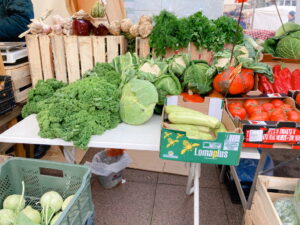
How Does Grünkohl Compare to Kale in the U.S. and Japan?
Grünkohl belongs to the kale family, but its usage and taste seem to differ depending on the country.
In Japan, kale is often associated with Aojiru (green juice), which has a rather strong, grassy flavor. It’s not commonly eaten raw, and fresh kale itself doesn’t seem to be widely available in supermarkets. Because of this, it may not be a familiar ingredient in everyday cooking.
In the U.S., curly kale appears to be the closest variety to Grünkohl. However, it is often used in salads and smoothies, and slow-cooking kale for hours doesn’t seem to be a common practice.
And what about France?
Now that I think about it, Grünkohl doesn’t seem to be commonly found in France either. If you’re in France and looking for an alternative, savoy cabbage (chou frisé) or Swiss chard (blette) could be good substitutes!
Looking at these differences, it’s interesting to see how kale is used in various ways depending on the country!
How Do Germans Eat Grünkohl?
One of the most traditional ways to enjoy Grünkohl is to slow-cook it for hours, allowing it to soak up the flavors of the ingredients it’s cooked with.
In northern Germany, a well-known dish called Grünkohl mit Pinkel is made by simmering Grünkohl with smoked sausages and pork, typically served with boiled potatoes.
Can’t Find Fresh Grünkohl? No Problem!
If fresh Grünkohl isn’t available, jarred Grünkohl is a great alternative! It’s widely sold in German supermarkets and significantly reduces cooking time while still delivering that authentic flavor. Plus, since it’s available year-round, you can enjoy it anytime!
You can also use curly kale, chijimi spinach, komatsuna (Japanese mustard spinach), or savoy cabbage as substitutes. The result may be slightly different, but it can still be a delicious way to enjoy this dish!
When I first tried Grünkohl, I wasn’t sure what to expect—was it really going to be sweet? But after slow-cooking it, I was completely surprised. The texture became soft and velvety, the flavors deepened, and the natural sweetness stood out beautifully!
And here’s a tip—try cooking it with Kassler (German smoked pork), and you’ll take the flavor to a whole new level! The smoky, savory richness of the meat infuses the greens, making every bite even more satisfying.
If you’re curious, why not give it a try? Starting with jarred Grünkohl is an easy way to experience it, or if you’re in Germany, ordering it at a local restaurant could be a great option.
And if you’re feeling adventurous… Why not make it yourself? Check out my Grünkohl recipe “German-Style Slow-Cooked Kale (Grünkohl) with Smoked Pork (Kassler)” on Umami and give it a try! 😊
